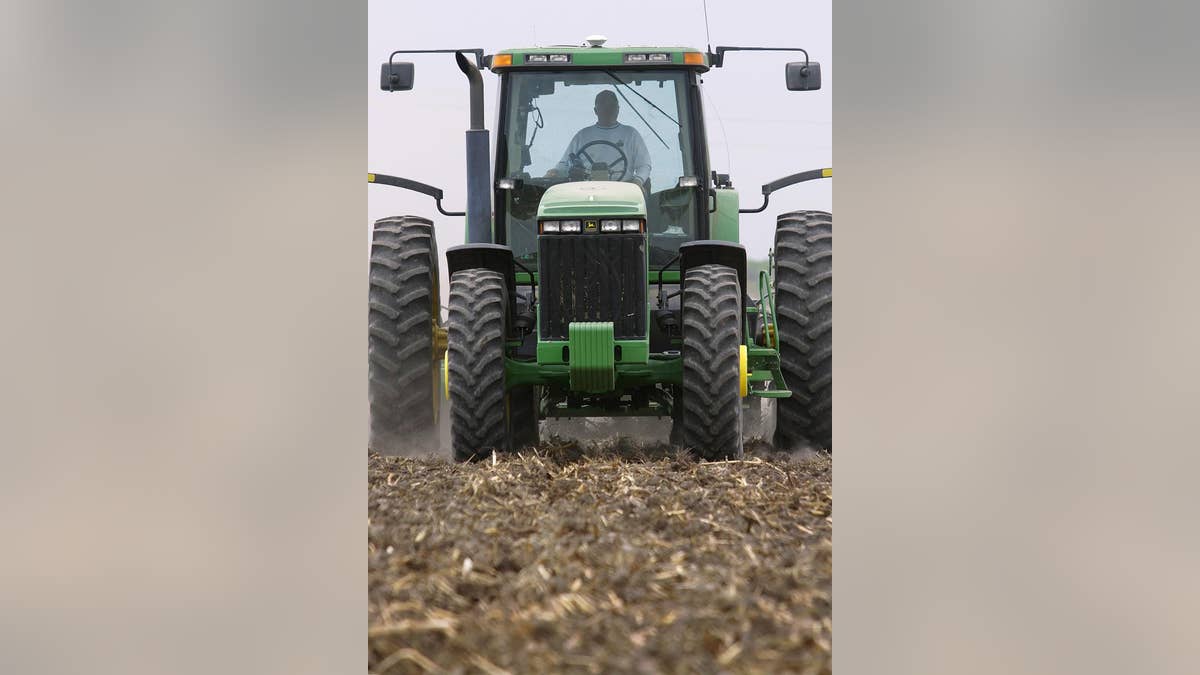
(AP File Photo)
Thanks to their influence in Washington, and the iconic status of the American farmer, for decades U.S. agriculture enjoyed a sacred place in the federal budget and received massive handouts from Congress. That may be coming to an end, but not without a fight.
"Farmers and ranchers are willing to do their share, we just don't want to do more than our fair share," says Mary Kay Thatcher of the American Farm Bureau. "We compete with farmers around the world and until other farmers and other governments are willing to give up their subsidies, we are unwilling to give up ours."
CLICK HERE TO SEE YOUR SHARE WITH OUR TAXPAYER CALCULATOR
Three programs face big cuts: conservation subsides that give farmers money to take marginal lands out of production for wildlife, crop insurance, and direct payments to farmers who plant corn, cotton, wheat, soybean, rice and peanuts. The farmers of these commodities are eligible for government payouts whether they farm or not.
"We cannot afford to lavish these subsidies on corporate agribusiness," says Steve Ellis of Taxpayers for Common Sense. "Paying farmers not to farm doesn't make any sense and neither does giving people money just because they happen to own land where historically there had been farming like direct payments."
Fruit and vegetable farmers are not entitled to direct payments and some corn farmers who are eligible don't take them.
"Most corn and soybean farmers would be fine if they went away," says Steve Pitstick, an Illinois corn farmer. He says the payments date back decades when commodities enjoyed government mandated price supports and farmers got paid when price fell below certain levels. The price supports are gone but the payments survived, thanks to Congress.
The presidents isn't proposing eliminating the program - only scaling back the maximum payment from $40,000 to $30,000, according to Thatcher.
"The payments are based on how much you grow," she says. "It is not whether you have 10 acres of corn or 2,000 acres of corn and you get the same amount of payment. Payment is based on how much you produce."
Conservation programs, which date back to the Dust Bowl when the federal government wanted to protect family farms at all costs, are under slightly less budget pressure, partially because they have the support of environmentalists, hunters and fishermen.
The $4 billion dollar crop insurance program may be the most controversial of the three. Taxpayers pay up to 60 percent of each farmer's insurance premium, in addition to insurance company salaries and sometimes taxpayers help cover losses.
"Crop insurance is booming and it's an area where farmers make money hand over fist," says Ellis. "We're talking about $6 billion dollars a year for the next 10 years. It's preposterous when you look at it in comparison to the average American buying their own car insurance."
But farmers and their supporters say the insurance is vital.
"Most farmers can do away with direct payments," says Pitstick, "but crop insurance is vital to health of the industry. It is kind of a national security thing, to produce a good crop every year to feed the world. Most of the time we don't need crop insurance, but those once in a 20 year events - we have to have it."
Thatcher also says the subsidy is in the national interest. While the federal money right now looks unnecessary - considering the record high prices for most commodities and strong exports with a weak dollar - she says farming is cyclical, and without taxpayer support, America could lose the family farmer.
"Farmers couldn't afford adequate crop insurance and any risk management if we didn't subsidize those premiums," she says.




